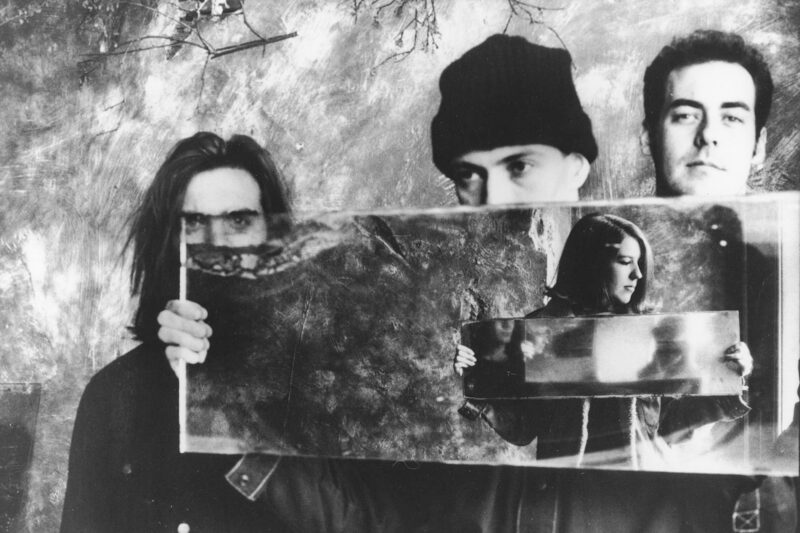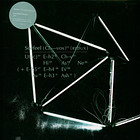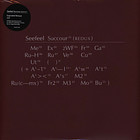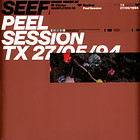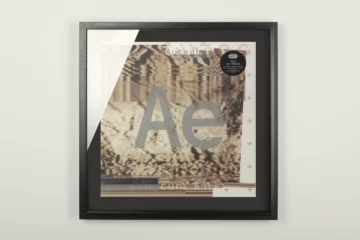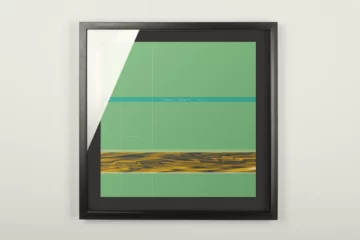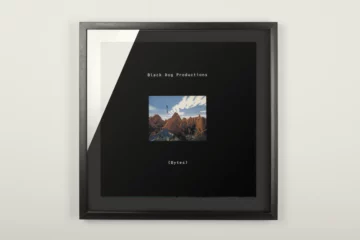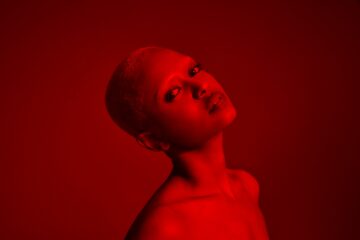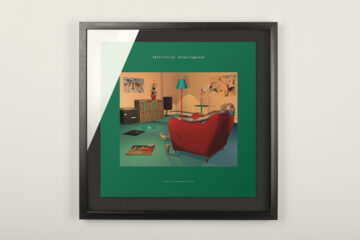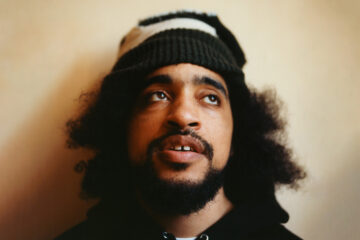Seefeel are not exactly the glittering star in music history with everyone nodding knowingly when you name-drop them. Despite releases in the 1990s on hype labels like Astralwerks, Rephlex, Too Pure and Warp, despite horrendous prices of their albums on Discogs and despite recent deluxe reissues, the band has been living an underdog existence for almost 30 years.
This may have to do with lengthy breaks which condense their active time to a few years. If there’s one thing the music market doesn’t forgive, it is discontinuity. But even in the quite active years between 1993 and 1996, in which Seefeel released three albums and several EPs, the name generated rather question marks.
»I think with us… you either found Seefeel or you didn’t. It was as simple as that. You couldn’t have another band and say, ›oh if you like this, you should listen to Seefeel’‹ because I don’t think there were too many other bands like us,« Mark Clifford, head of Seefeel, once explained in a 2003 interview. Discovering Seefeel, even after almost 30 years, is more of a chance encounter. Because today, even more than back then, discovering music usually runs along reference lines.
True, in 1995, just being part of the Warp Record roster should have caused a lot of people to jump. Unfortunately, Seefeel were the de facto first and, for a long time, only act on the dance and electronic label that was not only worthy of the title »band«, but also used guitars and played their concerts live in the original sense. At the same time, their music had as much in common with rock, alternative and the approaching Britpop as Oasis had with Musique Concrete.
The Sum of Individual Parts Equals The Unknown
For Seefeel, this has always been a self-chosen path. Even the birth of the band speaks for itself. Mark Clifford, driven by his love for the band Cocteau Twins, was determined to form an own band in 1991. After over a dozen rehearsals in existing bands, he realised that none of the musicians were on the same wave length. According to Sarah Peacock, Clifford then defined this in his own ad as »people wanted to make beautiful music with.«
Perhaps it was precisely this absolutely unreferential, almost transcendental approach that in the end brought people together who otherwise would never have crossed paths. Mark Clifford (sequencer, guitar, pedals) came more from effects-laden subgenres like dream pop and dub. Sarah Peacock (vocals) was a classic indie rock fan. Daren Seymour (bass) emerged from Krautrock. And drummer Justin Fletcher mostly listened to blues. Mark van Hoen, who left Seefeel after the first EP »More Like Space« (Too Pure, 1993), came from ambient and electronic backgrounds.
Even when Seefeel reunited in 2010 after a 14-year hiatus with Clifford, Peacock, Iida Kazuhisa and Shigeru Ishihara, genre links counted for little. Kazuhisa was previously the drummer for noise band Boredoms. Ishihara banged breakcore through the stereos as DJ Scotch Egg. All of these influences found their way into Seefeel’s music in one form or another. However, they became nothing more than forgotten echoes (not manifestations) venturing into uncharted territory.
Metallic drums and a massive bass density mixed in huge underground caverns to massive earth tremors.
However, the start of this improbable blend in 1992 was initially immature. The first tracks, recorded on a simple 4-track recorder, followed more conventional indie, as Sarah Peacock confessed in an interview in 2007. There is little information about the departure of Mark van Hoen. But the likelihood that the equally head-strong Clifford and van Hoen were pulling in different directions over creative issues is likely to explain not only the break, but also the subsequent evolution into a radically new sound.
The rhythm section changed and took a back seat. Sounds were still recorded live. However, these were buried in dub manner under massive effects. Classic song structures flew out the window and were overcome by the freedom of meandering tracks. And Sarah Peacock limited her vocals to one-liners that were also heavily re-painted under effects.
Over the course of a few months, Seefeel morphed into a band in a classic rock outfit but whose sound reshaped the space of any genre purist into an amorphous shape. Instead of following many rock bands of the era in purely adding electronic elements and manipulations into their traditional rock format as a fashionable tool, they were an integral part of Seefeel’s sound and the actual songwriting. Sound was the song and not just an afterthought. Live concerts became aural glue, as Clifford himself named it.
From Light To Darkness To Vacuum
In relatively short periods of time thereafter, a new and evolving sound experience erupted in three groundbreaking albums, which in its singularity can be placed on a par with Autechre and Future Sound Of London. The debut album »Quique« (Too Pure, 1993) still creates a shimmering ether that remains incomprehensible in its entirety. Guitar sounds and Sarah Peacock’s voice became a stream of particles. Bass lines built deep sea foundations. And the drums became stoic shadows.
»Succour« (Warp, 1995) and the single »Spangle« (Warp, 1994) then already stretched into darker spaces. Metallic drums and a massive bass density mixed in huge underground caverns to massive earth tremors. With the move to Warp, the sound seemed even more electronic, partly reminiscing Aphex Twins’ »Selected Ambient Works II« (Warp, 1994). Yet Seefeel used far fewer samples on this album than on their debut. And still no synthesizers were used. Everything was live, even the most unrecognizable guitar parts.
1996 saw the release of »(CH-VOX)«, Seefeel’s last sign of life for a while, on Rephlex Records as a kind of afterthought. The tracks were from the »Succour« session, and a thank you to Richard D. James (aka Aphex Twin), who had given them two free remixes for their 1993 EP »Time To Find Me« (Too Pure) out of pure love. They are even darker and evoke a sense of separation.
Seefeel were a child of their time from 1993 to 1996, when a Cambrian style explosion occurred sound-wise.
The three albums follow a sonic trajectory from awakening to breakup. The glamorously envisioned touring turned into a constant burden. Especially the sound checks, for which Mark Clifford was responsible as the band’s sound master. If the sound wasn’t right, every concert turned into mush. The band dynamics also became increasingly sluggish.
Mark Clifford remained the mastermind all these years, and even though Clifford emphasized in interviews that each band member had their part in the tracks – be it conceptually, musically, dynamically or simply mentally – he was responsible for the writing, which was based on sound processing. Thus, it was up to sound manipulator Clifford to form the impulse, to which Peacock, Seymour and Fletcher contributed and added changes.
By 1997, exhausted, Seefeel took a break that would last 14 years. Peacock and Clifford got back together thanks to the late Warp Records head Steve Beckett. He had asked them for a gig at the Warp XX parties, which celebrated the 20th anniversary of the label. Suddenly, the chemistry was right again. Since Seymour and Fletcher were no longer living in the UK, rendering live rehearsals impossible, Kazuhisa and Ishihara came joint ship.
The self-titled album, released in 2011, built on the past sound without nostalgically embracing it. »Seefeel« delivered a clearer sound, more differentiated, also more mature and fully formed. However, the long-standing fragmentation of electronic music into all kinds of genres, sound canyons and idea spaces made Seefeel seem far less singular in a post-dubstep/breakcore/techno/IDM world than it had been in the mid-1990s. And even though the new Seefeel constellation is still playing live, a follow-up album has been overdue for ten years – and probably not without reason.
Seefeel were a child of their time from 1993 to 1996, when a Cambrian style explosion occurred sound-wise. Their music remains intangible and unreproducible. If one wishes to conjure up a description, one may have to resort to an unconfirmed anecdote. Aphex Twin allegedly described his love for Seefeel’s music in an interview, saying »The main reason I like it is that as soon as you turn it off it leaves this big gap, this really big void.«

